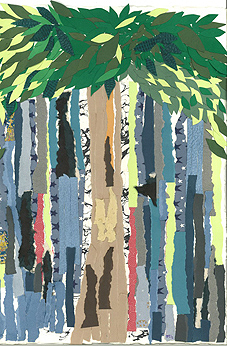The Fault Lines of Hindi and Urdu
Sanjay Kumar
Attempts were made to carve out monolithic literatures in terms of singular and exclusive literary traditions. The result has been production of insular literary canons and histories with wide gaps, discontinuities and often distortions through gross simplification which prevent a genuine understanding of our literary past. These literary histories refuse to take into account the deeply plural and heterogeneous nature of the pre-colonial Indian society marked by a wide variety of linguistic, literary and cultural traditions and practices at local, regional and supra-regional/cosmopolitan levels. Together, they were constituted into multiple interacting layers of Indian culture/society−each layer, though distinct and autonomous to some extent, was shaped and influenced by other layers in this formation. The boundaries between these layers were fluid and porous, each flowing seamlessly into others. This applied to linguistic and literary practices and traditions of North India too. Different vernaculars and dialects−Khari Boli, Awadhi, Braj, Rajasthani, Bangdu, Maithili, Bhojpuri etc.−not only existed in a shared common space but also freely interacted, mixed and borrowed from one another leading to significant overlaps. There were no sharp lines of demarcation could be found to be using different vernaculars/dialects or a mix of them on different occasions. During the early centuries of the second millennium when these North Indian Aryan vernaculars and dialects including Khari Boli were in the process of emergence from Apbhramsas and Prakrits, they came into contact with Persian and Arabic languages and developed in close interaction with them. It was not that these vernaculars were fully developed and had existence prior to the arrival of Perso-Arabic language with the invasion of Muslims.7 But literary historians, especially of Hindi, in their search for pure mythic origins would have us believe that Khari Boli existed before the arrival of the Muslims and it was only subsequent addition of Perso-Arabic vocabulary to it that gave rise to Urdu. These literary enthusiasts while tracing the beginning of Hindi literature to Amir Khusrau (1253-1325) forget to mention that he was a Muslim Sufi saint who wrote mainly in Persian with only occasional odd verse compositions like couplets, rhymes, proverbs in Khari Boli. Even a cursory look at these occasional verse compositions, which have been attributed to him, clearly show that these examples of Khari Boli were odd mixtures of Persian, Braj and Khari Boli. While literary historians of Hindi acknowledge that they carried an imprint of Braj (since they appropriated Braj into Hindi canon), they deliberately ignore the Persian influence. Yet, what the compositions of Khusrau and others of this period reveal is that these vernaculars/dialects did not exist in pure form, but were in a fluid state, mixed in various proportions depending on the context of the speaker. This becomes clear even from the very examples these literary historians cite in support of Khari Boli Hindi, but they willfully turn a blind eye to this phenomenon. In fact, this situation obtained not only in the early period of the development of these vernaculars but even as late as early nineteenth century. While citing the example of Simhasan Battisi which was produced at Fort William College, Alok Rai points out: “The language of Simhasan Battisi reflects the glorious confusion of the common tongue of north India, drawing freely not only from the classical founts of Sanskrit and Arabic and Persian, but also from the hybrid descendants of a whole range of Prakrits and other linguistic influences.“8 Further, these literary histories of both Urdu and Hindi leave a lot of gaps and discontinuities which are hard to explain when looked at in terms of single traditions. For example, not much is known about the state of Urdu in the North between its beginning in the 13th century with Khusrau and its re-efflorescence around 1700 A.D. with Vali coming to Delhi. Was it that after Khusrau, Urdu ceased to be practiced in the north for almost close to four centuries? Could it be possible? But the literary historians of Urdu would have us believe that this was precisely the case, and during this period Urdu migrated from its birthplace in the north to Gujarat and Deccan where it was practiced as Gujari and Dakhini. Pages 1 2 3 4 5 6 7 8 |
Essays in this Forum
Rethinking the Global South
by Mukoma Wa Ngugi From Indian Literature to World Literature: A Conversation with Satya P. Mohanty by Rashmi Dube Bhatnagar and Rajender Kaur Asia in My Life by Ngugi wa Thiong'o The Global South and Cultural Struggles: On the Afro-Asian People’s Solidarity Organization by Duncan Mceachern Yoon The Fault Lines of Hindi and Urdu by Sanjay Kumar Reframing Colonialism and Modernity: An Endeavour through Sociology and Literature by Gurminder K. Bhambra Varieties of Cultural Chauvinism and the Relevance of Comparative Studies by Tilottoma Misra Literature to Combat Cultural Chauvinism: A Response by Shivani Jha Is There an Indian Way of Thinking about Comparative Literature? by E. V. Ramakrishnan Modernity and Public Sphere in Vernacular by Purushottam Agrawal West Indian Writers and Cultural Chauvinism by Jerome Teelucksingh Oral Knowledge in Berber Women’s Expressions of the Sacred by Fatima Sadiki |
